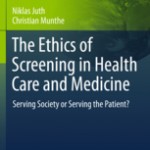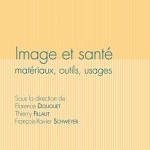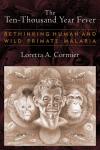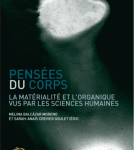Parution – The Ethics of Screening in Health Care and Medicine. Serving Society or Serving the Patient ?
 Juth Niklas et Munthe Christian (dir.), The Ethics of Screening in Health Care and Medicine. Serving Society or Serving the Patient ?, International Library of Ethics, Law, and the New Medicine, Vol. 51, 1st Edition., 2012, 175 p.
Juth Niklas et Munthe Christian (dir.), The Ethics of Screening in Health Care and Medicine. Serving Society or Serving the Patient ?, International Library of Ethics, Law, and the New Medicine, Vol. 51, 1st Edition., 2012, 175 p.
Medical or health-oriented screening programs are amongst the most debated aspects of health care and public health practices in health care and public health ethics, as well as health policy discussions. In spite of this, most treatments of screening in the research literature restrict themselves to isolated scientific aspects, sometimes complemented by economic analyses or loose speculations regarding policy aspects. At the same time, recent advances in medical genetics and technology, as well as a rapidly growing societal focus on public health concerns, inspires an increase in suggested or recently started screening programs.
This book involves an in-depth analysis of the ethical, political and philosophical issues related to health-oriented screening programs. It explores the considerations that arise when heath care interacts with other societal institutions on a large scale, as is the case with screening: What values may be promoted or compromised by screening programs? What conflicts of values do typically arise – both internally and in relation to the goals of health care, on the one hand, and the goals of public health and the general society, on the other? What aspects of screening are relevant for determining whether it should be undertaken or not and how it should be organised in order to remain defensible? What implications does the ethics of screening have for health care ethics as a whole?
These questions are addressed by applying philosophical methods of conceptual analysis, as well as models and theories from moral and political philosophy, medical ethics, and public health ethics, to a large number of ongoing and proposed screening programs which makes this book the first comprehensive work on the ethics of screening. Analyses and suggestions are made that are of potential interest to health care staff, medical researchers, policy makers and the general public.
Chapter 1: Introduction
1.1 The Wilson and Jungner Criteria
1.2 Point and Plan
1.3 The Concept of Screening
Chapter 2: Why Screening?
2.1 Screening, Treatment and Prevention: Preliminary Remarks
2.2 Health: Life and Well-being
2.2.1 Health and Counselling
2.2.2 The Good of People and of the Population
2.3 Autonomy
2.3.1 Respecting and Promoting Autonomy
2.3.2 Promoting Autonomy through Screening
2.4 Justice
2.5 Summary
Chapter 3: Screening – What, When and Whom?
3.1 Diseases and Groups
3.1.1 Prenatal Screening
3.1.2 Neonatal Screening
3.1.2.1 Reasons for Screening in the Neonatal Period
3.1.2.2 Neonatal Screening and Parental Informed Consent
3.1.2.3 Expanding Neonatal Screening – How Far?
3.1.3 Child and Adolescent Screening
3.1.3.1 Stigmatisation
3.1.3.2 The Child as Decision Maker
3.1.4 Adult Screening
3.2 Testing and Analysis
3.2.1 Safety
3.2.2 Validity
3.2.3 Predictive Value
3.3 Treatments
3.3.1 Abortion as Treatment
3.3.2 Counselling as Treatment
3.4 Summary
Chapter 4: Screening – How?
4.1 Informed Consent
4.2 Counselling
4.2.1 Genetic Counselling as a Template
4.2.2 Expansion: Shared Decision Making
4.3 Funding and Participation
4.4 Summary
Chapter 5: Case Studies
5.1 Non-Invasive Prenatal Diagnosis
5.2 Neonatal Screening for Fragile X
5.3 Mammography Screening
5.4 PSA Screening for Prostate Cancer
Chapter 6: Serving Society or Serving the Patient?
6.1 Summary of the Analysis So far
6.2 The Public Health – Health Care Tension Area
6.3 The Relevance of a Social Science Perspective
6.4 An Institutional Approach to health-related Ethics: A Sketch
6.5 Applying the Institutional Approach: Three Cases
6.5.1 Institutions, Functions and Ethics: Reproductive Care vs. Communicable Disease
6.5.2 Direct to Consumer Genetic Testing: The Limits of Context Relativity
6.5.3 Screening and Justice: The Case Against Allocating Health Care Resources to Screening
6.6 Revisiting the Wilson and Jungner Criteria for Screening
6.7 Closing
 The journal of medicine and philosophy, vol 36, n°5, octobre 2011
The journal of medicine and philosophy, vol 36, n°5, octobre 2011





